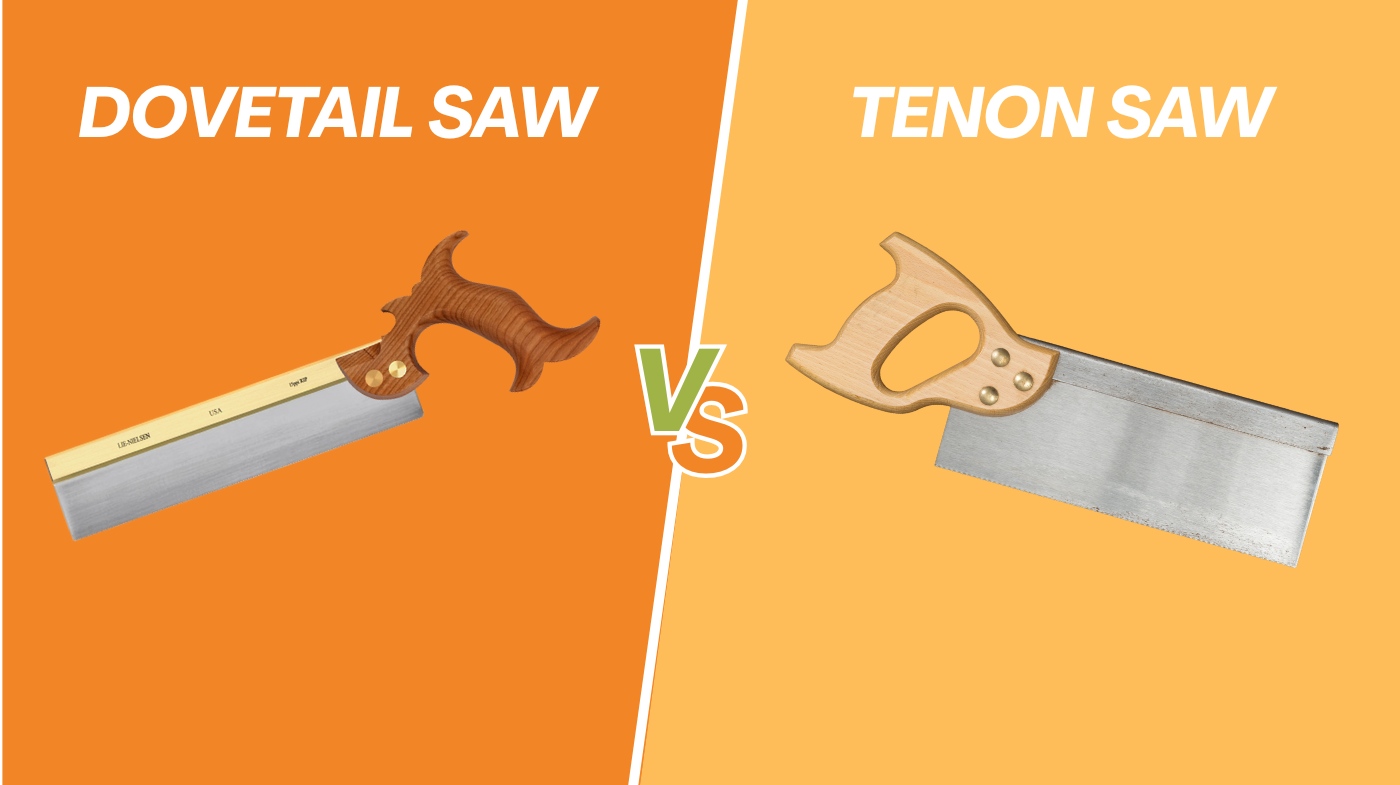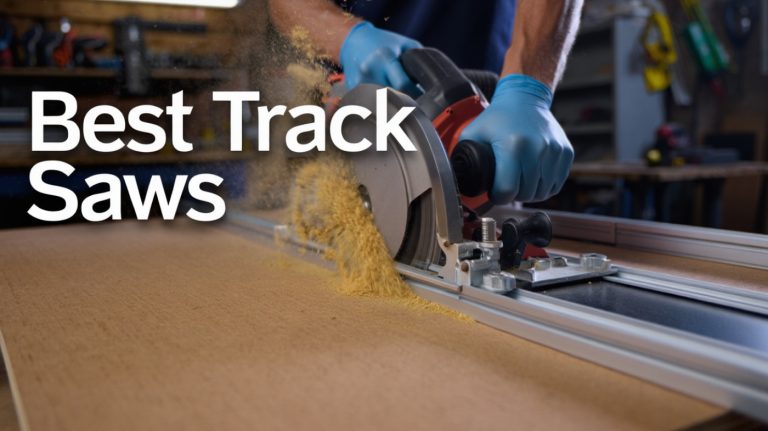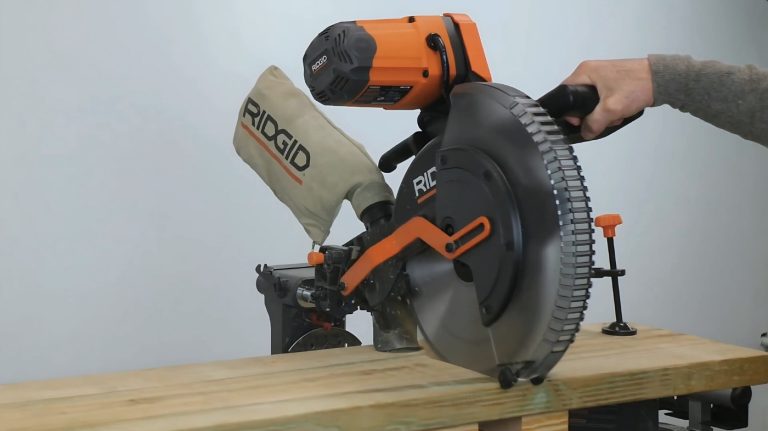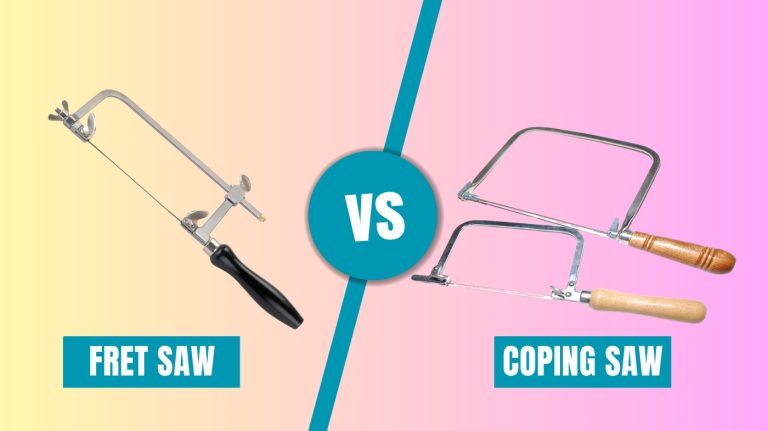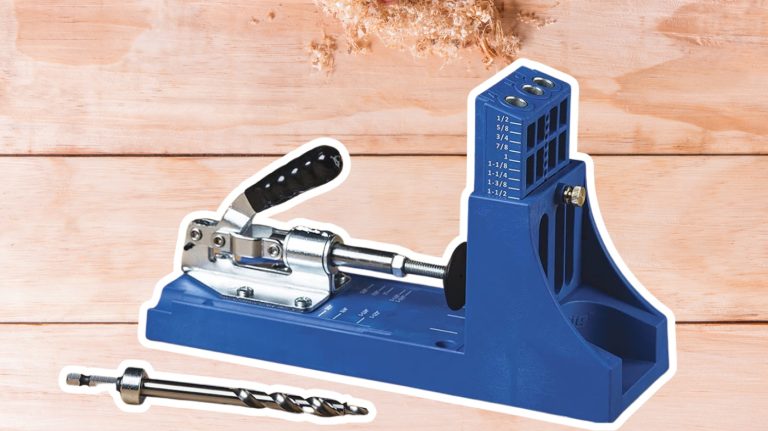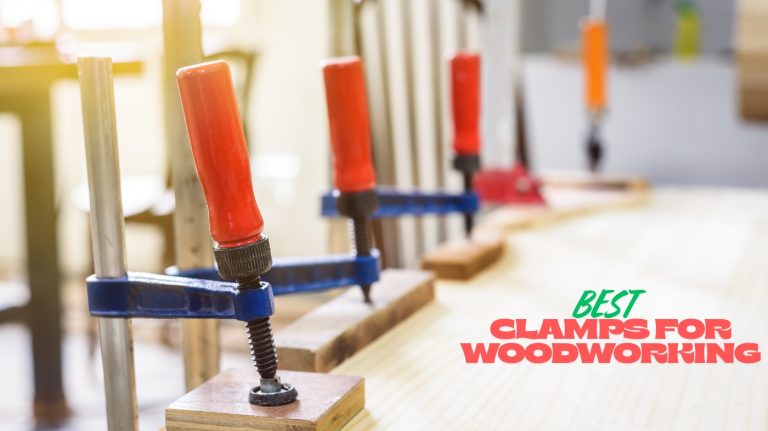Dovetail Saw vs Tenon Saw: Know the Key Differences
When choosing between a dovetail saw and a tenon saw, consider your cut precision and material size. Dovetail saws have thinner blades (about 0.015–0.020 inches) with fine, closely spaced teeth ideal for delicate, precise joinery like dovetails.
Tenon saws feature thicker blades (around 0.025–0.035 inches), larger teeth, and reinforced backs, offering stiffness and power for heavier cuts like tenons and framing. You’ll soon see how their design differences impact control, accuracy, and application depth.
- Reversible Blade: Our 10″ dovetail jamb saw features a spring-loaded design that enables you to…
- Straight Cutting: Reversible dovetail jamb saw adapt steel carbon back prevents bending for strong,…
- Bi-material Handle: Handle is marked JORGENSEN on each jamb saw, it’s made of PP+TPR material, the…
- Ideal for cutting out a tenon and cutting pelmets, moulding, dowelling, coving, architraves and…
- Fast efficient cutting
- A fine cut with a smooth, clean cutting action
Key Takeaways
- Dovetail saws have thinner blades (0.015–0.020″) for fine, precise joinery; tenon saws use thicker blades (0.025–0.035″) for stable, heavier cuts.
- Dovetail saws feature finer teeth (15–32 PPI) for delicate, clean cuts; tenon saws have larger teeth (9–12 PPI) for faster, more aggressive cutting.
- Dovetail saws excel at tight-fitting dovetail joints in small stock; tenon saws are designed for cutting tenons and larger structural joints.
- Tenon saws have a robust back (brass or iron) to prevent blade flex, while dovetail saws may have a lighter steel back for rigidity.
- Handles differ: dovetail saws have smaller, ergonomic grips for control; tenon saws have larger pistol grips for power and stability.
Quick Comparison Table: Dovetail vs Tenon Saws at a Glance
| Feature | Dovetail Saw | Tenon Saw |
|---|---|---|
| Typical Blade Length | 6–10 in | 12–16 in |
| Blade Depth below the Back | 1.5–2 in (shallow) | 3–4 in (deep) |
| Teeth-per-Inch (TPI) & Filing | 15–20 TPI, usually rip-filed for clean end-grain cuts | 10–14 TPI, often rip or hybrid for faster, deeper cuts |
| Blade Thickness | ≈0.015 in (very thin for minimal kerf) | ≈0.020–0.025 in (stiffer for heavy work) |
| Best-suited Stock Thickness | Up to 1 in (fine joinery) | 2 in or more (larger joinery) |
| Primary Use | Precise, small cuts such as dovetail pins/tails | Cutting cheeks & shoulders of larger mortise-and-tenon joints |
Size and Dimensions Comparison
While both dovetail saws and tenon saws serve critical roles in woodworking, their size and dimensions differ markedly to suit their specific tasks.
Dovetail saw blades typically range from 6 to 10 inches, with common lengths around 9 to 10 inches, like the Veritas at 9-1/4″ or Bahco at 9-3/4″. Their overall length stays compact, usually between 14 and 15 inches, ideal for precise joinery in limited space.
For example, the Highland dovetail saw has an overall length of approximately 14 inches, making it well-suited for detailed work in tight areas. Proper blade height and alignment are essential for achieving clean, accurate cuts with these saws.
In contrast, tenon saw blades extend from 10 to 12 inches, with overall lengths of 15 to 18 inches to accommodate deeper cuts. Dovetail saws feature thinner blades around 0.019” to 0.020” for fine control, while tenon saws have thicker blades to maintain rigidity during larger cuts.
These dimensional differences reflect their specialized cutting functions. The Highland dovetail saw also includes a light steel back, enhancing rigidity without adding excessive weight, which is crucial for its fine cutting tasks.
Differences in Tooth Design and Cutting Style
You’ll notice dovetail saws have finer, closely spaced teeth designed for precise rip cuts, making them ideal for delicate joinery. These teeth are often made from carbide-tipped blades, which provide durability and clean cuts.
Tenon saws, in contrast, feature larger teeth with varied spacing to handle both rip and crosscuts efficiently on thicker stock. Their blade design usually balances cutting speed and smoothness, suitable for versatile woodworking tasks.
Additionally, a good dovetail saw can serve multiple functions, including cutting dovetails and tenons, and can often replace multiple specialized saws for certain tasks, offering great tool versatility.
Tooth Size and Spacing
Because tooth size and spacing directly influence cutting performance, understanding their differences between dovetail and tenon saws helps you select the right tool for your joinery.
Dovetail saws feature fine teeth, typically 15–16 PPI, sometimes up to 32 PPI, with closely spaced teeth that ensure precise, clean cuts in thin stock. This fine tooth density maintains accuracy and produces a narrow kerf, ideal for detailed work.
Since finer blades (such as those with high PPI) are harder to sharpen, it is important to choose a saw with at least 15 PPI for effective resharpening and long-term use. Proper blade alignment is essential to maintain the accuracy that fine-toothed saws provide.
Conversely, tenon saws have coarser teeth, around 9–12 PPI, with wider spacing to remove material faster in thicker stock. Their larger teeth cut more aggressively but yield a rougher finish.
Tooth density also affects control: finer dovetail saw teeth help maintain a straight line, while tenon saws prioritize efficiency over finesse.
Cut Type and Application
When choosing between a dovetail saw and a tenon saw, understanding their tooth design and cutting style is vital to achieving accurate results.
Dovetail saws feature fine rip-filed teeth optimized for precise, controlled cuts in small, thin stock. They are ideal for delicate joinery like dovetails.
Their minimal kerf preserves wood integrity and reduces tear-out by slicing fibers along the grain. The saw plate in dovetail saws is notably thinner, usually around 15 thousandths of an inch, which enhances their precision and finesse.
In contrast, tenon saws have larger, more aggressive teeth—rip or crosscut patterns—designed to handle thicker wood and robust cuts. Crosscut teeth sever fibers cleanly at an angle, minimizing tear-out on tenon shoulders, while rip teeth suit tenon cheeks.
The tenon saw’s thicker blade stabilizes forceful cuts on larger stock, balancing accuracy with power. Selecting the correct saw ensures clean, efficient cuts tailored to your joinery needs.
Primary Uses and Applications for Each Saw
Although both dovetail and tenon saws serve essential roles in woodworking, their primary uses differ considerably based on the scale and precision of the cuts.
You’ll rely on a dovetail saw for fine, precise tasks like cutting dovetail joints, small tenons, and detailed trim work, benefiting from its high tooth count and clean finish. The dovetail saw’s blade length and tooth size make it especially versatile for various small woodworking tasks.
In contrast, a tenon saw excels at heavier tasks such as cutting tenon cheeks and shoulders on larger hardwoods, ripping and crosscutting stock where controlled power is needed.
While dovetail saws handle delicate, small-scale joinery, tenon saws manage medium to large workpieces demanding robust cuts. To ensure precision in these tasks, it is beneficial to use tools with accurate angle guides.
Your choice depends on the joint type, material size, and required accuracy, with dovetail saws favored for intricate detail and tenon saws for structural framing and initial shaping.
Blade Thickness and Impact on Performance
You’ll notice dovetail saw blades are thinner, typically between 0.015″ and 0.020″. This enhances precision but requires careful control to avoid flexing. For example, dovetail saws often have a blade thickness of 0.020 inches made from high-carbon steel for durability and sharpness.
Tenon saw blades, thicker at 0.025″ to 0.035″, provide greater stiffness for straight, controlled cuts through heavier stock. Maintaining blade sharpness is essential to preserve cutting quality and saw performance, especially with thicker blades.
Thickness Differences Explained
Because blade thickness directly influences cutting performance, understanding the differences between dovetail and tenon saws is essential for selecting the right tool.
Tenon saw blades are generally around or above 2 mm thick, providing the strength needed for robust, straight cuts on larger joints. This thickness supports larger teeth and reduces blade deflection, enabling aggressive rip cuts through hardwood.
They typically have a rigid back that adds stability for straight, controlled cuts. The blade design and thickness also affect the cutting efficiency and durability required for heavy-duty woodworking.
In contrast, dovetail saw blades range from 0.5 to just under 1 mm thick, favoring precision. Their thinner blades allow finer, delicate cuts with narrower kerfs but require more careful handling due to increased flexibility.
This thickness also dictates tooth size—smaller for dovetails, larger for tenons—impacting cutting speed and detail.
Stiffness and Control
When selecting between dovetail and tenon saws, understanding how blade thickness influences stiffness and control is essential.
Tenon saws feature thicker blades—around 2 mm or more—that provide superior stiffness, enabling you to maintain straight, robust cuts, especially on tenon cheeks and shoulders. This enhanced rigidity minimizes lateral blade flex and vibration, improving control during aggressive cuts.
Additionally, tenon saws are a common choice among woodworkers for their push-cut action, which complements their sturdy design. The increased stiffness also contributes to optimal cutting efficiency by engaging wood fibers effectively.
Conversely, dovetail saws use thinner blades that offer greater flexibility and nimbleness, which suits delicate joinery work but demands careful handling to avoid blade deflection under pressure.
The thicker blade in tenon saws, combined with a reinforced back and robust handle, stabilizes the blade under force, whereas dovetail saw handles prioritize wrist finesse.
Cutting Precision Effects
Although both dovetail and tenon saws excel in woodworking, their blade thickness substantially impacts cutting precision and overall performance.
You’ll find tenon saw blades thicker—around 2 mm or more—offering robustness for heavier cuts but producing a wider kerf that can loosen joint fits.
The tenon saw’s brass back adds rigidity, preventing blade flex during these heavier cuts and enhancing accuracy. Proper blade maintenance can further ensure consistent cutting results and prolong blade life.
Dovetail saws, with blades thinner than 1 mm, minimize kerf width, enabling fine, tight-fitting dovetail joints by reducing material removal.
This thinness also pairs with higher TPI (12-32+), delivering cleaner, delicate cuts with less tear-out, essential for intricate joinery. Regular cleaning and lubrication help maintain the sharpness and precision of these blades over time.
Conversely, the tenon saw’s lower TPI (9-14) suits faster, more aggressive cuts on larger stock but sacrifices finesse.
Handle Design and Ergonomics
Since handle design directly influences control and comfort, understanding the distinctions between dovetail and tenon saw handles is essential.
Handle design shapes control and comfort, making it vital to distinguish between dovetail and tenon saw handles.
You’ll notice dovetail saw handles are smaller, often featuring an inline or gent’s grip for delicate balance and precise thrusts. Their smooth, rounded contours minimize hand fatigue during intricate work.
Historically, these smaller handles were handmade to tightly enclose the hand, providing superior control and accuracy. Proper maintenance and inspection of saw components, including handles, help sustain optimal cutting conditions and reduce user fatigue.
In contrast, tenon saw handles are larger with a pistol grip shape, engineered to provide strength and stability for powerful, sustained cuts.
These handles often include reinforced construction and are attached securely with rivets, supporting the heavier blade and reducing vibration. Selecting the right handle design also complements proper blade tension and alignment, which is critical for stable and efficient cutting.
Both use hardwood materials, but tenon saw handles emphasize durability to withstand torque. Proper attachment and ergonomic shaping ensure you maintain control, whether you’re executing fine joinery or robust structural cuts.
Sharpening Techniques and Maintenance Challenges
Mastering the differences in handle design gives you better control, but maintaining sharp, properly set teeth guarantees your saw performs reliably over time. Proper blade guards and safety features are essential to ensure safe handling while sharpening and using these saws.
Dovetail saws feature fine teeth (14–18 tpi), demanding delicate filing and precise setting, which can be challenging due to their size and visibility. Sharpening beyond 16 tpi often requires specialized equipment, making hand filing impractical.
A Gents dovetail saw, typically around 8 inches with 15 TPI, offers a good balance of size and tooth fineness for many detailed dovetail cuts.
Tenon saws, with coarser rip or crosscut teeth (9–12 tpi), tolerate more aggressive filing but need correct file angles to maintain tooth geometry.
Frequent sharpening is necessary with tenon saws cutting hardwood, while dovetail saws wear slower due to lighter use. Regular maintenance, including cleaning and checking blade alignment, helps prolong the tool’s effectiveness.
Both types rely on quality steel and robust backs for blade stability. Regular checks on handle tightness and rust removal keep these tools reliable, but expect more maintenance effort with tenon saws’ thicker blades and aggressive teeth.
Considering the material type you work with can guide your maintenance and sharpening frequency for optimal performance.
Advantages of Dovetail Saws in Fine Joinery
When you need precise, clean cuts for fine joinery, dovetail saws excel due to their finely spaced teeth and ergonomic design. Their small, sharp teeth allow you to make smooth, accurate cuts essential for tight-fitting dovetail joints.
You’ll appreciate the ergonomic handle that reduces strain and enhances control, letting you maintain steady, deliberate strokes. This precision guarantees your joints fit perfectly, enhancing both strength and aesthetic appeal.
The saw’s versatility lets you handle various delicate joinery tasks beyond dovetails, making it a valuable addition to your toolkit. In fact, using the right tools, such as a dovetail saw, is key to creating beautiful, sturdy joints.
Benefits of Tenon Saws for Robust Woodworking
While dovetail saws excel at fine, detailed joinery, tenon saws offer distinct advantages for more robust woodworking tasks. Featuring a stiff brass or iron back, tenon saws prevent blade flex, ensuring precise, straight cuts essential for strong mortise and tenon joints.
Their wider, thicker blades with around 14 TPI balance fine cutting and aggressive crosscutting across hardwood grain. You’ll appreciate the longer 12–14 inch strokes that enable cleaner, faster cuts through larger, thicker timber up to 3⅝ inches deep.
The saw’s weight and rigidity reduce fatigue and improve control, maintaining momentum in dense wood. Versatile for shoulders, dadoes, and medium-sized pieces, tenon saws provide durability and accuracy, making them indispensable for structural joinery requiring strength and efficiency.
Historically, tenon saws were often used in conjunction with a mitre box or bench hook to guide accurate cuts, highlighting their role in larger bench work.
Frequently Asked Questions
Can Dovetail Saws Be Used Effectively on Hardwoods?
You might find dovetail saws gently coax hardwoods into submission rather than force them. Their fine teeth and thin plates offer precise, clean cuts ideal for detailed joinery.
However, they demand patience and skill, especially on dense wood. While not the fastest option, their careful design minimizes tear-out and binding. If you sharpen and maintain them well, you’ll achieve excellent results on hardwoods, particularly for delicate or intricate cuts.
Are Tenon Saws Suitable for Beginners in Woodworking?
Yes, tenon saws are ideal for beginners in woodworking. Their rigid back stabilizes the blade, helping you achieve straight, precise cuts with less effort. You’ll find the handle design supports accurate control, while the saw’s tooth pattern suits both crosscuts and detail work.
Starting cuts evenly and using guided finger placement improves your technique. Plus, the saw’s push-stroke action teaches essential sawing skills safely and effectively for novices.
How Does Climate Affect the Wooden Handles of These Saws?
You’ll notice wood expands in humidity, contracts in dryness, swells with moisture, shrinks with heat. These fluctuations cause your saw handle to loosen, crack, or warp over time.
Temperature swings accelerate drying or brittleness, worsening damage. Different woods and finishes affect resistance, so maintaining a stable environment, applying finishes regularly, and inspecting handles prevent structural issues.
What Is the Typical Lifespan of a Dovetail Saw Blade?
You can expect a dovetail saw blade to last several years with proper care and occasional sharpening. If you use it frequently on hardwoods, plan on sharpening every few months to maintain precision.
Avoid twisting the blade or cutting stock thicker than 3/4″ to prevent damage. Regular cleaning, proper storage, and professional sharpening help extend its lifespan considerably. Replace the blade when you notice a loss of cutting accuracy or difficulty holding a sharp edge.
Can Blade Replacement Be Done on Both Saw Types?
You can replace blades on many dovetail saws, especially Japanese dozuki types with screw or hook mounts, making swaps straightforward.
Replacement blades are commercially available and often pre-toothed. However, tenon saws typically have fixed blades integrated into the back and handle, limiting or preventing replacement.
With most tenon saws, you’ll maintain sharpness through regular honing instead of swapping blades, unless you have a specialized or modern variant designed for blade replacement.
Make the Right Saw Choice for Every Project
Choosing between a dovetail saw and a tenon saw depends on your specific woodworking needs. While you might worry a dovetail saw’s finer teeth limit versatility, its precision is unmatched for delicate joinery.
Conversely, the tenon saw’s thicker blade excels in strength and durability for robust cuts. Understanding these distinctions guarantees you select the right tool, optimizing both accuracy and efficiency in your projects without compromise.
- JAPANESE STYLE PULL SAW: This product is a “Pull Saw.” Most people are used to European saws,…
- JAPANESE STEEL: All SUIZAN Japanese saws consist of top quality Japanese steel. The high-quality…
- MADE IN JAPAN: All SUIZAN products are manufactured in Japan by Japanese master craftsmen. The whole…
- Universal teeth for general use, cuts along and across the grain
- Brass back for maximum rigidity
- For joint cutting & sawing small pieces of wood and wood based materials
Last update on 2025-11-29 / Affiliate links / Images from Amazon Product Advertising API

